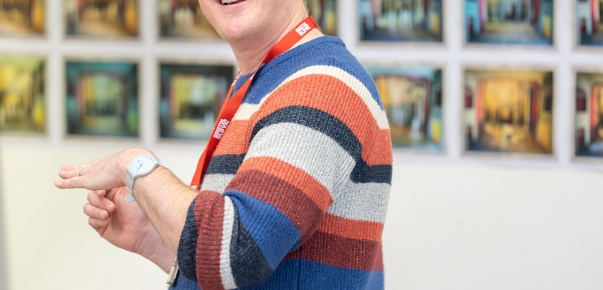Illustrator Alexander Bertram-Powell talks us through creating the image for The Morpeth Carol.
8 Nov 2011The Morpeth Carol is a sound play; visuals scarce to non-existent with an emphasis on description and atmosphere. The story revolves around 9 year-old Harry’s discovery of a mysterious figure among snowy wreckage at Christmas time, and the unfolding events. Being approached to produce a visual facet for this performance, in the form of an illustration, is a slightly daunting task; putting a face on something without a face, risking compromising the element of imagination crucial to the event, and at the same time capturing those descriptions as well.
Character design is sort of a strange art, one of muddling references together and capturing something of the persona in their outward appearance, many illustrated characters being a sort of caricature of themselves. Sonic The Hedgehog’s designers famously drew inspiration from Michael Jackson and Santa Claus.
I’m going to write here about the thought process and some of the manual work for visually rendering the character of The Man. Here we have one of the few visual descriptions contained in the play:
“He was wearing a hood — a massive coat, raggedy, black, torn. Carrying a long rifle. Barrel scraped along the ground as he walked… And I could see his face now. Very thin. Unshaven. Patchy stubble. Bags beneath the eyes.”
We know The Man is old, possibly supernatural. He has a powerful presence, overwhelming his implicit age and possibly frailty. Over the course of the story we come to learn that he exists in a certain state of bondage; powerful, yet emasculated. There’s a certain balance to the character which deserves to be reflected physically.
One of the first things that sprang to mind when reading the early portions of the script was a scene from one of Terry Pratchett’s books, namely Small Gods. The scene in particular where the protagonist Brutha carries deacon Vorbis, a powerful and intimidating man who has fallen unconscious, and discovers how light and frail his body actually is. This kind of outwardly dominating physical presence, in spite of a certain lack of physicality, is exactly what I wanted to capture in The Man.
The second point of reference was a rather more obvious one: the character Pyramid Head, from the Silent Hill franchise. Pyramid Head has always stood out as a looming, ancient, multi-faceted yet brutally glib character; being at once judge, executioner and prisoner, with long robes and a concealed face, dragging his weapon as he goes. Like The Man, his presence encapsulates elements of religious worship and determined workmanship, as well as something gorily sinister.
In seeking to capture these qualities of imposing ancientness I was moved to explore physical traits that we feel we have moved past in the modern world. I chose for The Man’s skeleton to be a similar shape to that of Australopithecus, with arms stretching to the knees, a hulking long ribcage and sloping forehead. Separately, I learned that castrati typically developed abnormally long arms and large ribcages (accounting for the power and sustain of their singing), thus this morphology, as well as harkening to the primitive, animal side of man, at the same time serves as a visual reference to emasculation. In addition to this, The Man would appear unnaturally tall.The Man wears a hooded coat, which I elected to draw as his only piece of attire in an attempt to emphasis his apparent adaptability. I chose to divide the coat into two pieces: a large, practical piece of winter attire, and then the hood. The hood was loosely modelled on executioners’ cowls, being a detachable object that gave shape to the bust of the figure and hid the face.Here we have the pencil and ink work for The Man as he appears in the final image.http://www.alexbpart.com/







